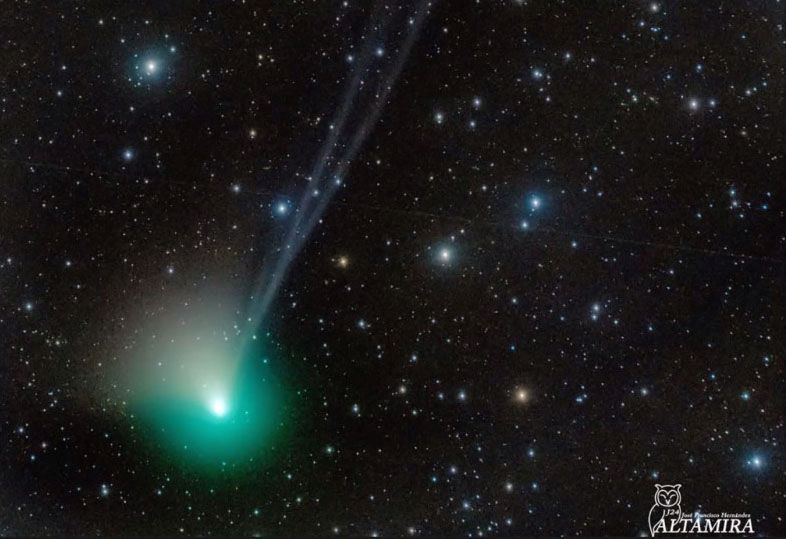Spectacular Sky Phenomena to Mark 2023: Annular Solar Eclipse and Comet C2022 E3 (ZTF)
2023 will be a year to remember for astronomers and sky enthusiasts alike. Mark your calendars for the annular solar eclipse on October 14 and the passage of Comet C2022 E3 (ZTF) in February. Get ready for a stunning display of celestial events.

2023 promises to be an incredible year for astronomical events, according to José Franco, a researcher at the UNAM's Institute of Astronomy. This year, we will see a solar eclipse with a ring around it, the comet C2022 E3 (ZTF) will pass by, and meteor showers will happen as usual.
José Franco explains that although eclipses and meteor showers happen every year, this year is special because of the annular solar eclipse. This rare phenomenon occurs when the moon, in its elliptical orbit around the Sun, is farthest from the Earth and its apparent size is smaller than the Sun. During this time, the moon will only partially cover the sun, creating a ring-like effect. The annular solar eclipse is set to take place on October 14 and will be visible in the Pacific Ocean, the United States, Mexico, Central America, Brazil, and the Atlantic.
However, the researcher warns that direct observation of the solar eclipse can cause blindness, so it's crucial to protect your eyes. On the other hand, nocturnal events such as meteor showers, comets, and planetary conjunctions can be viewed safely with the naked eye.
Comet C2022 E3 (ZTF) will make its closest approach to Earth in early February, providing a once-in-a-lifetime opportunity to observe it clearly in dark skies. José Franco suggests using a telescope for a better viewing experience.
Meteor showers, made up of rocks from comets that burn upon entering the Earth's atmosphere, are also a fascinating astronomical event. The best time to observe them is during the dry season, when there are no clouds to obstruct the view. The winter and spring meteor showers, such as the Geminids and Lyrids, are highly visible, with up to 120 and 20 objects per hour, respectively. The Perseids meteor shower in August is also worth checking out, with up to 60 objects per hour.
In conclusion, 2023 is shaping up to be an amazing year for astronomical events, with a rare annular solar eclipse, the passage of a unique comet, and stunning meteor showers. Make sure to protect your eyes during the solar eclipse and enjoy the beauty of the sky this year!




